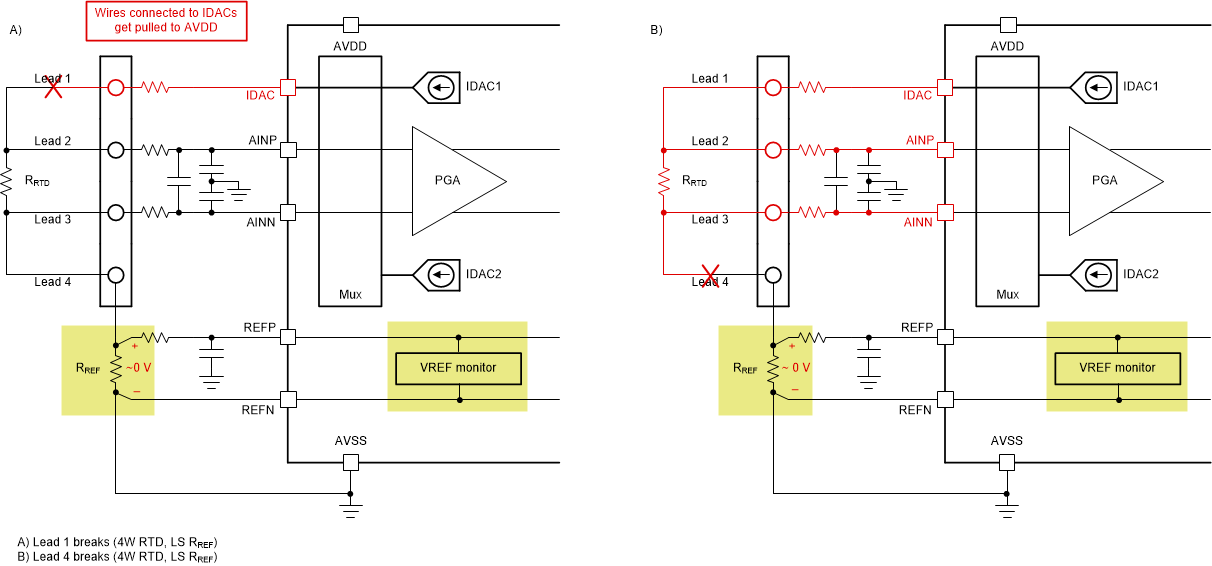SBAA483 February 2021 ADS1120 , ADS112C04 , ADS112U04 , ADS114S06 , ADS114S06B , ADS114S08 , ADS114S08B , ADS1220 , ADS122C04 , ADS122U04 , ADS124S06 , ADS124S08 , ADS125H02 , ADS1260 , ADS1261 , ADS1262 , ADS1263
- Abstract
- Trademarks
- 1Introduction
- 2Features Used to Detect Wire Breaks in RTD Systems
- 3Wire-Break Detection Methods for Different RTD Configurations
- 4Settling Time Considerations for RTD Wire-Break Detection
- 5Summary
- A How Integrated PGA Rail Detection Helps Identify Wire Breaks
- B Pseudo-Code for RTD Wire-Break Detection
3.3 Wire-Break Detection in a 4-Wire RTD System
Four-wire RTDs are the most accurate configuration because they do not suffer from the challenges inherent to the 3-wire RTD implementations: multiple measurements in the case of the one-IDAC system, or mismatched current sources in the case of the two-IDAC systems. As a result, 4-wire RTDs are also the most expensive sensors and consume the most PCB space because they require four terminals. Four-wire RTDs are generally used where temperature measurement accuracy is the most critical system parameter.
Similar to the 3-wire RTD fault detection methods, the VREF monitors can be used to detect the majority of the wire breaks in a 4-wire RTD system. Under normal operating conditions, any combination of wire breaks that include a break in lead 1 or lead 4 always eliminates the path to ground for the IDAC, resulting in a fault detectable by the VREF monitor. Figure 3-10 shows this result in a low-side RREF configuration, though the same detection scheme can be used for a high-side RREF.
 Figure 3-10 Lead 1 (Left) and Lead 4 (Right)
Breaks in a 4-Wire RTD System
Figure 3-10 Lead 1 (Left) and Lead 4 (Right)
Breaks in a 4-Wire RTD SystemThe only cases where the VREF monitor does not detect a wire break in a 4-wire RTD system is if only lead 2, lead 3, or both lead 2 and lead 3 break. In these cases, a wire break likely causes the ADC output to deviate from the expected value, but the cause cannot be assumed to be a wire break as opposed to some other system anomaly.
Therefore, perform a diagnostic measurement routine using the IDACs in the ADC similar to those described in the previous sections. Furthermore, as previously described, the routine is different depending if a low-side or high-side RREF configuration is used.